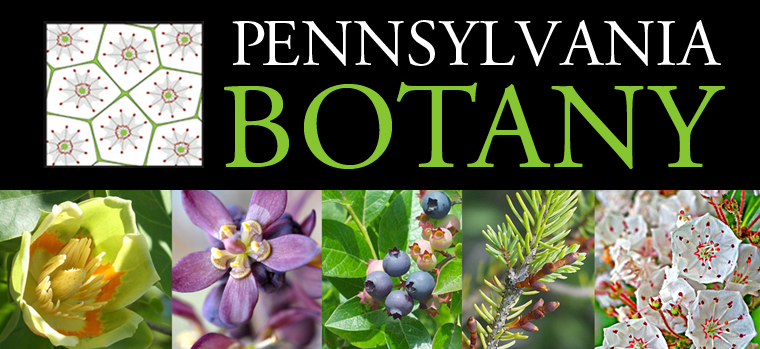
SYMPOSIUM PRESENTER BIOS
The contents of this page are also available in this PDF.
Tanisha Williams, PhD, presenting Partnering to Conserve PA Native Species. Tanisha is an assistant professor in the Department of Plant Biology and Director of the UGA Herbarium. Her research examines the impacts of climate change and uses genomics methods to update the conservation status of rare plants. Prior to joining UGA, Williams was the Richard E. and Yvonne Smith Postdoctoral Fellow at Bucknell University. She earned her doctorate degree in Ecology and Evolutionary Biology from the University of Connecticut. She is the founder of Black Botanists Week, a campaign to amplify diverse voices in botany. She is also the recipient of the 2023 Bicentenary Medal from The Linnean Society. Originally from Washington, DC, Williams enjoys hiking and traveling.
Cheyenne Moore, presenting The Plant Conservation Alliance: Changes, Progress, and Plants! After earning a B.S. in Biology from Dickinson College, Cheyenne received her M.S. in Biology from Bucknell University where she worked on conservation and genetics of Pennsylvania’s threatened, rare, and endangered plant taxa. She is now the Pennsylvania Plant Conservation Alliance Coordinator for the PA Dept. of Conservation and Natural Resources and the PA Natural Heritage Program. In this role she facilitates the conservation of Pennsylvania’s globally rare, threatened, and endangered plants.
Jason Kilgore, PhD, presenting Does Herd Immunity Work for Trees? Lessons learned from selective treatment of white ash trees for emerald ash borer on the Allegheny National Forest. Jason is Professor of Biology and Curator of the Campus Arboretum at Washington & Jefferson College. His research focuses on plant community responses to environmental change, including novel species and other disturbances. Jason collaborates with scientists from the Northern Research Station (USDA Forest Service) and Ecological Research as Education Network (EREN). Jason teaches courses in field biology, forest ecology, water resources, biostatistics, and immigration issues. In addition to experience as a natural resource consultant, Jason earned degrees from Michigan State University in Environmental Science (BS), Conservation & Environmental Management (BS), Dendroecology (MS), and Biogeography & Ecophysiology of Ponderosae (PhD).
Sarah Nilson, PhD and Eric Burkhart, PhD, presenting Pennsylvania’s Ramps: What are they, where do they grow, and should we be concerned?
Dr. Sarah Nilson is an Assistant Professor of Biology at Penn State Beaver. She is a plant biologist who studies interdisciplinary research questions relating to wild plant conservation and agroforestry. Her work spans population genetics, plant physiology, taxonomy, and ethnobotany. Her current research addresses conservation and agroforestry of culturally and economically significant non-timber forest species and other wild plants including American ginseng (Panax quinquefolium), goldenseal (Hydrastis canadensis), ramps/wild leek (Allium tricoccum), and wild bleeding heart (Dicentra eximia).
Dr. Eric Burkhart is the Director of Appalachian Botany and Ethnobotany at Shaver’s Creek Environmental Center and an Associate Teaching Professor in the Department of Ecosystem Science and Management at Penn State. His group conducts research on questions relating to Appalachian Forest botany, ethnobotany, ecology, phytochemistry, horticulture, agroforestry, and invasive forest plants. Burkhart’s research to date has focused on four culturally and economically important eastern North American forest plants: American ginseng (Panax quinquefolius), goldenseal (Hydrastis canadensis), ramps/wild leek (Allium tricoccum), and ghost-pipe (Monotropa uniflora).
Marc Abrams, PhD, presenting Native Americans, Smokey the Bear and the rise and fall of eastern US fire ecosystems. Marc recently retired from Penn State University’s Department of Ecosystem Science and Management where he taught courses in Forest Ecology and Tree Physiology, advised more than two dozen graduate students and served as Editor for multiple ecological and forestry journals. His current research is focused on global change ecology and the impacts of indigenous people. He is widely known for his studies in disturbance ecology, old-growth forests, tree physiology and vegetation classification.
Roger Latham, PhD, Cool Finds Slide Show Curator & Narrator. Roger has worked as a research ecologist, conservation biologist, and environmental planner since the year the Endangered Species Act was passed (1973). After earning a Ph.D. in biology at the University of Pennsylvania, he served as Pennsylvania Director of Science and Stewardship for The Nature Conservancy, post-doctoral researcher in biogeochemistry and fire ecology in Penn’s Department of Geology, and faculty member in the Department of Biology at Swarthmore College. For the last 23 years he has been a full-time consultant, conducting applied research and planning for agencies and organizations involved in wildlands stewardship and endangered species recovery.
Melissa McCormick, PhD, presenting Orchids, Fungi, and the Surrounding Plant Community—the wood wide web may be even bigger than we thought. Dr. Melissa McCormick is an Ecologist at the Smithsonian Environmental Research Center, where she has studied orchids and other plants since 1999. She uses a combination of field and DNA-based techniques to study orchid-fungus interactions, orchid conservation, and plant invasions. Her main research focus is on how mycorrhizal fungi affect orchid rarity and distribution. She is also one of the founding members of the North American Orchid Conservation Center (NAOCC), a pioneering initiative to link botanic gardens, land managers, and researchers to conserve all the native orchids of North America.